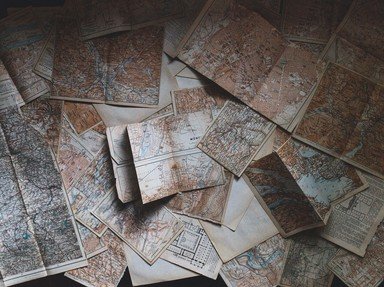Quiz Answer Key and Fun Facts
1. The long transition from hunting and gathering to farming and domesticating was called what?
2. The oldest written form of language in the New World (North, Central, and South America) belonged to whom?
3. The "People of the Purple" are from which kingdom?
4. The Greek, Herodotus, is most famous for his contributions to what field?
5. What was Istanbul called before it got the name Constantinople?
6. Mansa Musa was the ruler of which ancient African kingdom?
7. Which one of the following is NOT a major deity of Hinduism?
8. The original Great Wall of China was built during which dynasty?
9. The "Black Death" is also known as ... ?
10. Martin Luther was most notably against the sale of what?
Source: Author
ElderScrolls
This quiz was reviewed by FunTrivia editor
bloomsby before going online.
Any errors found in FunTrivia content are routinely corrected through our feedback system.
